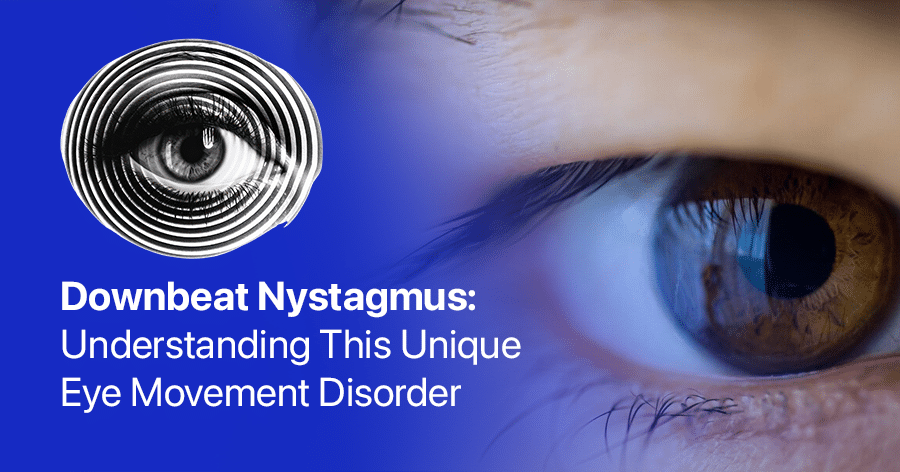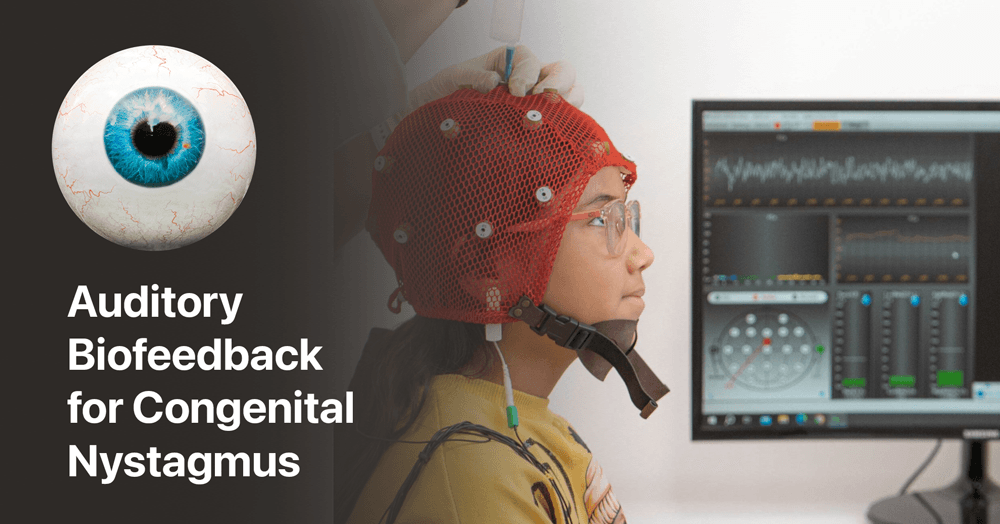
Nystagmus: Insights from Recent Research
Congenital nystagmus (CN) is a condition characterized by involuntary, rhythmic oscillations of the eyes, typically occurring horizontally at frequencies between 2 to 10 Hz. Traditionally, CN was considered to be caused by a malfunction in the oculomotor system, involving brainstem pathways that control eye movements. However, groundbreaking research now reveals that CN, particularly in association with congenital stationary night blindness (CSNB), may originate from abnormal activity within the retina itself.
This article explores the retinal mechanisms behind CN, challenging conventional understanding and offering a new perspective on how oscillations in retinal ganglion cells (RGCs) can drive the oscillatory eye movements characteristic of this condition.
Stabilizing Sensory Input: The Role of the Visual and Vestibular Systems
The human brain has a remarkable ability to stabilize visual input during motion. This stabilization is critical for maintaining clear and steady vision. Two key reflexes contribute to this: the vestibulo-ocular reflex (VOR) and the optokinetic reflex (OKR). Together, these systems ensure that retinal images remain steady even as we move our head or eyes.
When the VOR detects head movement, it triggers compensatory eye movements to counterbalance this motion. Similarly, the OKR detects image slip on the retina and initiates corrective eye movements. However, when these systems malfunction, nystagmus can occur. For decades, nystagmus was thought to arise from a disrupted OKR or VOR loop, but new evidence challenges this view.
The Retinal Oscillator Hypothesis
Recent studies using animal models, particularly Nyxnob mice with mutations linked to CSNB, have provided compelling evidence that congenital nystagmus may originate from within the retina itself. These mice exhibit horizontal nystagmus and a disrupted OKR response. Remarkably, when the retinas of these mice were isolated and studied, researchers found that the RGCs continued to oscillate even in the absence of brain input. This suggested that the retina contains an intrinsic oscillator that drives eye movements.
Further investigation revealed that the oscillatory activity in RGCs was synchronized with the frequency of nystagmus in living mice, implying that retinal activity directly causes the oscillations in eye movement. This finding fundamentally shifts our understanding of CN from a brainstem-driven condition to one potentially rooted in the retina.
Proof of Causality: Experimental Evidence
To establish a direct causal relationship between retinal oscillations and nystagmus, researchers conducted a series of experiments:
- Inducing Nystagmus: Mutations in specific proteins involved in the photoreceptor to ON-bipolar cell synapse were shown to cause both retinal oscillations and nystagmus. These mutations affected the transmission of signals between photoreceptors and bipolar cells, leading to abnormal retinal activity.
- Blocking Nystagmus: By pharmacologically inhibiting retinal output in Nyxnob mice, researchers were able to stop the nystagmus. This demonstrated that the oscillatory signal driving eye movements originated in the retina rather than from a brain-based feedback loop.
- Modifying Nystagmus: When researchers reduced the frequency of retinal oscillations using specific drugs, the frequency of the nystagmus also decreased, further supporting the hypothesis that retinal activity is directly responsible for the eye movements.
The Role of AII Amacrine Cells in Retinal Oscillations
A critical player in this retinal-driven mechanism is the AII amacrine cell (AII AC), a specialized neuron involved in processing signals from rod and cone photoreceptors. AII ACs relay information from rod-driven ON-bipolar cells to cone-driven pathways, allowing for night vision and motion detection. Under normal conditions, these cells help to amplify weak visual signals. However, in conditions like CSNB, where ON-bipolar cell activity is disrupted, AII ACs become abnormally depolarized, leading to oscillations.
These oscillations in AII ACs are then transmitted to RGCs via electrical coupling, setting off a chain reaction that ultimately results in nystagmus. Importantly, the frequency of these oscillations can vary depending on the degree of depolarization, explaining the range of nystagmus frequencies observed in different patients.
Synchronization and the Light Sensitivity of Nystagmus
One of the striking features of CN is its sensitivity to light. Nystagmus often intensifies in bright light and diminishes in darkness. This phenomenon can be explained by the synchronization of retinal oscillations. In darkness, RGCs oscillate at different frequencies and phases, which results in weak or absent eye movements. However, when exposed to light, these oscillations become synchronized, leading to stronger and more rhythmic nystagmus.
This light-dependent synchronization provides a compelling explanation for why patients with CN often report worsened symptoms in bright environments, especially when performing tasks that require focused vision.
Implications for Other Forms of Nystagmus
The discovery that retinal oscillations can drive nystagmus in CSNB raises important questions about whether similar mechanisms are involved in other forms of congenital or acquired nystagmus. Conditions such as retinitis pigmentosa (RP), which also involve retinal degeneration and abnormal AII AC activity, may share this retinal-based mechanism. However, the extent to which retinal oscillations contribute to nystagmus in other diseases remains an open question.
Stay Informed with “The Nystagmus Book”
If you’re looking to deepen your understanding of nystagmus and stay up-to-date with the latest research and management strategies, I invite you to check out my book, “The Nystagmus Book.” This comprehensive guide contains all the legitimate, up-to-date information about nystagmus as of 2024, including the most recent research findings and best practices for managing the condition.
In a world where misleading information about nystagmus is unfortunately common, “The Nystagmus Book” offers a reliable, science-based resource. It’s packed with practical tips, the latest treatment options, and insights from my 20+ years of research in the field. Whether you’re living with nystagmus, caring for someone who is, or simply want to learn more about this condition, this book is an invaluable resource.
Conclusion
The identification of a retinal origin for congenital nystagmus represents a significant shift in our understanding of this complex condition. Rather than being solely a brainstem or oculomotor disorder, CN may arise from abnormal oscillations in the retina itself. This discovery opens up new avenues for research and potential therapeutic interventions aimed at modulating retinal activity to reduce or eliminate nystagmus. As our understanding of the intricate relationships between retinal cells and eye movements deepens, so too does the possibility of finding more effective treatments for patients affected by this challenging condition.
Sources: https://www.frontiersin.org/journals/ophthalmology/articles/10.3389/fopht.2023.1186280/full




